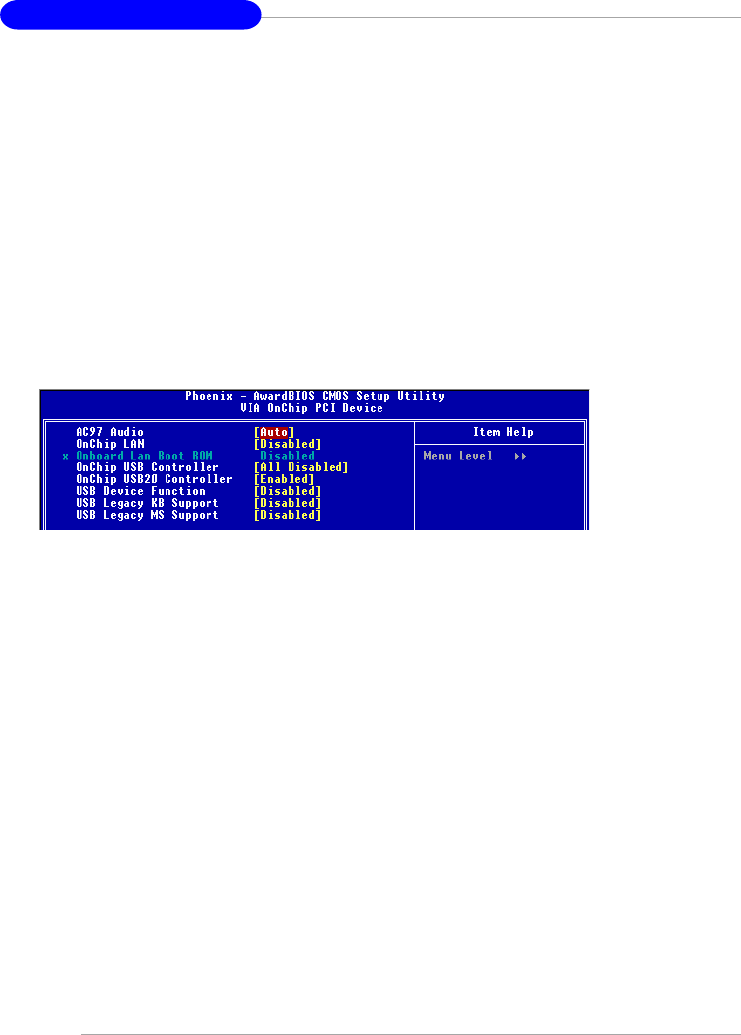
3-14
MS-6734 M-ATX Mainboard
Primary/Secondary Master/Slave PIO
The four IDE PIO (Programmed Input/Output) fields let you set a PIO mode (0-4) for
each of the four IDE devices that the onboard IDE interface supports. Modes 0
through 4 provide successively increased performance. In Auto mode, the system
automatically determines the best mode for each device. The settings are: Auto,
Mode 0, Mode 1, Mode 2, Mode 3, Mode 4.
Primary/Secondary Master/Slave UltraDMA
Ultra DMA/33 implementation is possible only if your IDE hard drive supports it and the
operating environment includes a DMA driver (Windows 95 OSR2 or a third-party IDE
bus master driver). If your hard drive and your system software both support Ultra
DMA/33, Ultra DMA/66 and Ultra DMA/100 select Auto to enable BIOS support. The
settings are: Auto, Disabled.
VIA OnChip PCI Device
Press <Enter> to enter the sub-menu and the following screen appears:
AC97 Audio
Auto allows the motherboard’s BIOS to detect whether you’re using any audio device.
If so, the onboard audio controller will be enabled. If not, the onboard audio controller
will be disabled. If you want to use different controller cards to connect audio
connectors, set the field to Disabled. Setting options: Disabled, Auto.
OnChip LAN
Setting to [Auto] allows the BIOS to auto-detect the LAN controller and enable it.
Setting options: Auto and Disabled.
Onboard Lan Boot ROM
The item enables or disables the initialization of the onboard LAN Boot ROM during
bootup. Selecting Disabled will speed up the boot process.
OnChip USB Controller
This setting is used to enable/disable the onboard USB1.1 controller. Setting options:
Disabled, Enabled.
OnChip USB2.0 Controller
This setting is used to enable/disable the onboard USB2.0 controller. Setting options:
Disabled, Enabled.
USB Device Function
This setting is used to enable/disable the onboard USB device controller. Setting
options: Disabled, Enabled.


















